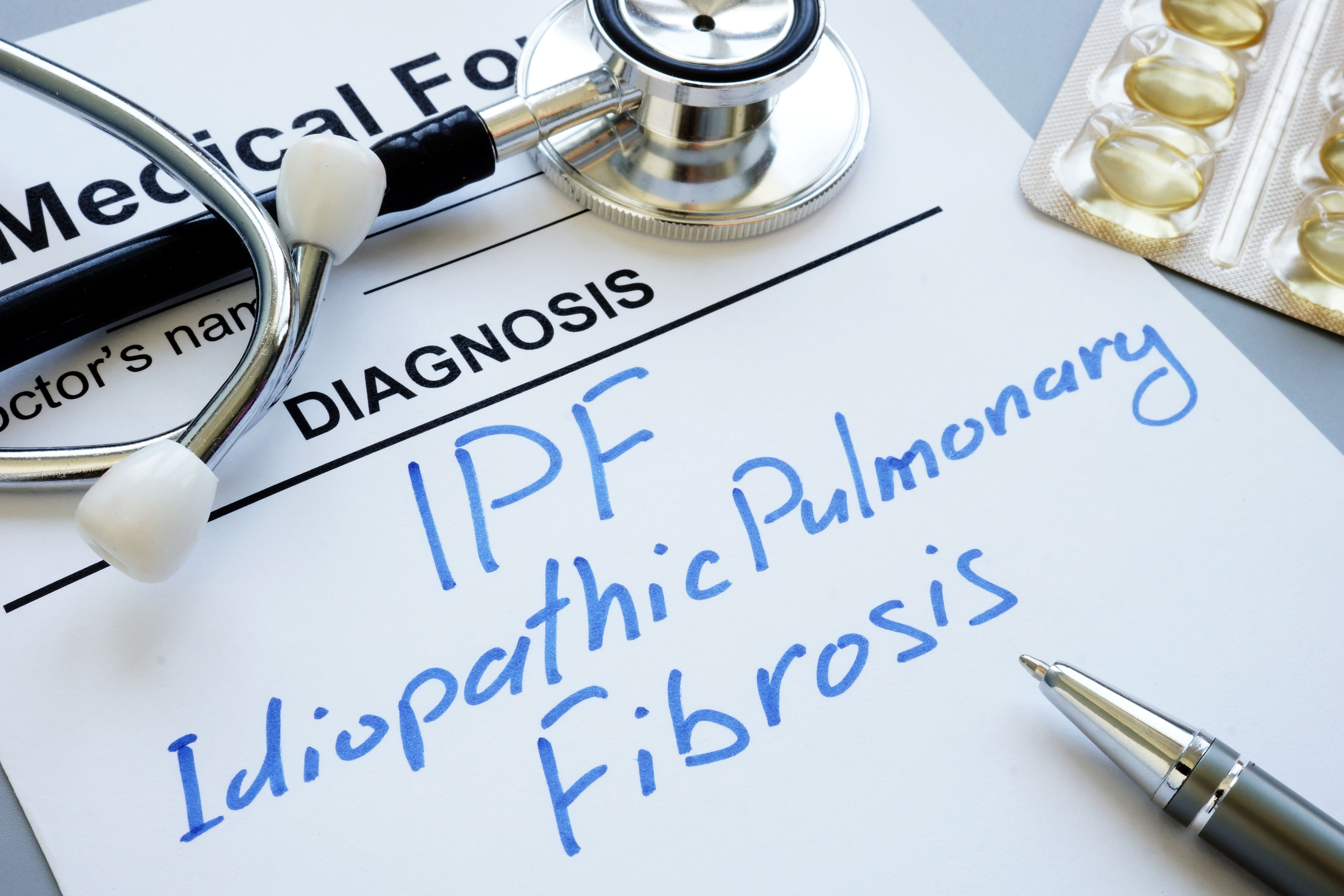News
Article
Report Highlights Advancements in 2024 Idiopathic Pulmonary Fibrosis Pipeline
Author(s):
More than 100 therapies for idiopathic pulmonary fibrosis are being developed across the globe.
The landscape of idiopathic pulmonary fibrosis (IPF) treatment is poised for significant transformation, with more than 80 companies across the world developing more than 100 therapies, according to a news release from DelveInsight Business Research.1
DelveInsight’s recent report, “Idiopathic Pulmonary Fibrosis Pipeline Insight, 2024,” delved into the intricate details of this year’s pipeline, including detailed assessments of ongoing clinical trials, therapeutic mechanisms, developmental stages, and more.2
The DelveInsight report gave an in-depth analysis of the IPF treatment pipeline in 2024 | Image credit: Vitalii Vodolazskyi – stock.adobe.com

What Is IPF?
IPF is a chronic and progressive lung disease that affects the tissue surrounding the air sacs in the lungs, marked by the thickening and scarring of lung tissue, leading to a gradual decline in lung function.3 The term "idiopathic" reflects the unknown cause of the disease, which primarily affects adults aged 50 and older and is more prevalent in men.
Symptoms include persistent dry cough, shortness of breath, fatigue, and reduced exercise tolerance. As the disease progresses, permanent scarring—fibrosis—makes it harder and harder to breath and can significantly impact quality of life. Patients are at an increased risk of IPF if they smoke, have a family history of IPF, or are older in age.
The progression of IPF differs greatly among individuals. For some, the scarring of lung tissue may advance slowly or remain stable for years, while for others, it may progress rapidly. Many patients with IPF encounter acute exacerbations, where symptoms suddenly and significantly worsen. Other severe complications of IPF include pulmonary hypertension and respiratory failure. These occur when the lungs are unable to supply sufficient oxygen to the bloodstream, resulting in inadequate oxygen delivery to the brain and other vital organs.
Diagnosis typically involves a comprehensive medical history, physical examination, pulmonary function tests, high-resolution computed tomography scans, and occasionally, lung biopsy. While no cure currently exists, treatment options aim to slow disease progression and manage symptoms. These include antifibrotic medications such as pirfenidone and nintedanib, supportive care with oxygen therapy, and pulmonary rehabilitation. Additionally, lung transplantation may be considered for eligible patients.
Key Developments in IPF Therapeutics
DelveInsight's report gave an in-depth analysis of the IPF treatment pipeline, covering products from preclinical stages to those already marketed.1 Highlighting the progress and potential of various therapeutic candidates, the report emphasized the impact of emerging treatments on the future IPF market.
Several promising therapies are in the pipeline, with companies like FibroGen, United Therapeutics, Boehringer Ingelheim, and Novartis leading the charge. Notable emerging therapies include:
- USP30 Inhibitor
- LTI-03
- TD-1058
- PLN-74809
- GB0139
- Pamrevlumab
- Tipelukast
- HZN-825
- Brilaroxazine
- PRM-151
- C21
These therapies, currently in various stages of clinical development, and others are anticipated to significantly impact the IPF market in the coming years.
“In the coming years, the Pulmonary Fibrosis market is set to change due to the rising awareness of the disease, and incremental healthcare spending across the world; which would expand the size of the market to enable the drug manufacturers to penetrate more into the market,” a summary of the report said.2
The report also categorized pipeline drugs based on their mechanisms of action and routes of administration (ROA), providing a comprehensive therapeutic assessment.1 The diverse ROAs include oral, parenteral, intravitreal, subretinal, and topical methods. Additionally, therapies are classified by molecule type, such as monoclonal antibodies, peptides, polymers, small molecules, and gene therapies.
Regarding market dynamics, these are shaped by a combination of drivers and barriers for IPF. The ongoing development of targeted therapies, coupled with increased research funding and collaborations, drives market growth. However, challenges such as high development costs, regulatory hurdles, and the complex nature of the disease pose significant barriers.
Collaborations and Future Prospects
DelveInsight's report also highlighted extensive collaborations, including company-company and company-academia partnerships, licensing agreements, and financing deals, which are crucial for the advancement of IPF treatments. These collaborations are pivotal in overcoming market barriers and accelerating the development of effective therapies.
As more innovative therapies advance through clinical stages, the future holds promise for improved management and potential breakthroughs in treating this challenging disease for which there is no cure. For health care providers and other stakeholders, staying informed about these developments is crucial for anticipating market trends and contributing to the fight against IPF.
References
- Idiopathic pulmonary fibrosis pipeline analysis 2024: FDA approval, clinical trials, therapies, MOA, ROA by DelveInsight. News release. DelveInsight Business Research. June 25, 2024. Accessed June 25, 2024. https://www.einnews.com/pr_news/722691501/idiopathic-pulmonary-fibrosis-pipeline-analysis-2024-fda-approval-clinical-trials-therapies-moa-roa-by-delveinsight
- Pulmonary fibrosis - pipeline insight, 2024. DelveInsight, research report. January 2024. Accessed June 25, 2024. https://www.delveinsight.com/report-store/pulmonary-fibrosis-pipeline-insight
- What is idiopathic pulmonary fibrosis? National Heart, Lung, and Blood Institute. Updated June 26, 2023. Accessed June 25, 2024. https://www.nhlbi.nih.gov/health/idiopathic-pulmonary-fibrosis





